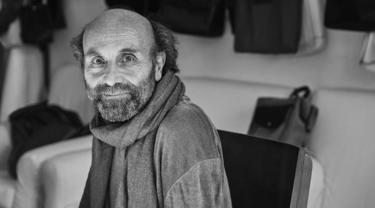Frédéric Mamarbachi is the founder of and creator behind m0851, a design approach that takes the form of a line of bags, accessories, leather jackets and outerwear that are designed and manufactured in Montréal.
Learn more about his export success here.
Frédéric Mamarbachi tells us more about m0851’s history with exporting:
When and why did you start thinking exporting might be right for your business?
When we put the finishing touches on the second m0851 collection (then known as Rugby North America), we found it so interesting that we decided to seek out retailers in New York. It was a strategic market, since the biggest buyers are all there.
I went there to meet with Bloomingdale’s representatives, and just that meeting was enough to get us our first big order. I think our absolute confidence in our collection must have showed. The buyer couldn’t help but love the product!
Then, we expanded our sales to all the large retailers like Saks and Barneys. Starting in 1991, we even had a show room on Fifth Avenue in New York.
How did your exporting experience evolve to take you where you are today?
Over the years, we came to realize that selling our collections through other retailers wasn’t the most advantageous long-term strategy. It was important for us to keep our full creative freedom, and yet we found ourselves having to create products that appealed to retailers, rather than to the customer. For a company like ours that marches to the beat of its own drum, that’s not who we are.
Today, I can easily say we made the right decision. We’re now up to 22 m0851 stores around the world, half of which directly belong to us. They are our stores, with our own people and where we sell what we want. This gave us the freedom and independence we needed to develop and maintain our brand identity.
What is the biggest difference between selling in Canada and selling abroad? How did you adapt?
There are some differences between the tastes of local and foreign consumers. For example, in Beijing, China, where it’s always cloudy, black, brown and grey don’t sell. Bright colours are more popular there.
Otherwise, top-selling products are generally the same all over the world. Our clientele has a very specific mindset and vision. We don’t follow current trends; we’re constantly innovating. There’s always going to be people looking for products that are different, that allow them to be themselves, without having others’ tastes imposed on them.
What has exporting taught you that has had a beneficial effect on your operations and sales in Canada?
One of the benefits of wholesaling through retailers in Canada and elsewhere is that it built up our reputation and allowed us to reach a much broader customer base more quickly. Then, when the market was ripe, we were able to open our own stores. That’s what we did in Canada. We’re actually planning to open several stores across the country in the coming year.
What is the best lesson you’ve learned from a bad exporting experience?
I think we’re always making mistakes. In fact, I don’t even remember them anymore because the important thing is to keep moving forward. In our view, a company that doesn’t make mistakes is one that’s not taking risks. Besides, times change! What was a mistake five years ago could be a great success story today.
What do you know about exporting today that you would have liked to know when you started out?
Knowing what the future had in store for us would’ve been boring! We still have so much to learn. We’re still alive 30 years later because we’re constantly learning and approaching our future with enthusiasm and openness. We don’t pretend to know everything, and we adapt. A lot of companies disappear because they’re unable to do that. One thing I know for sure is that after 30 years in business, we still don’t know everything.





